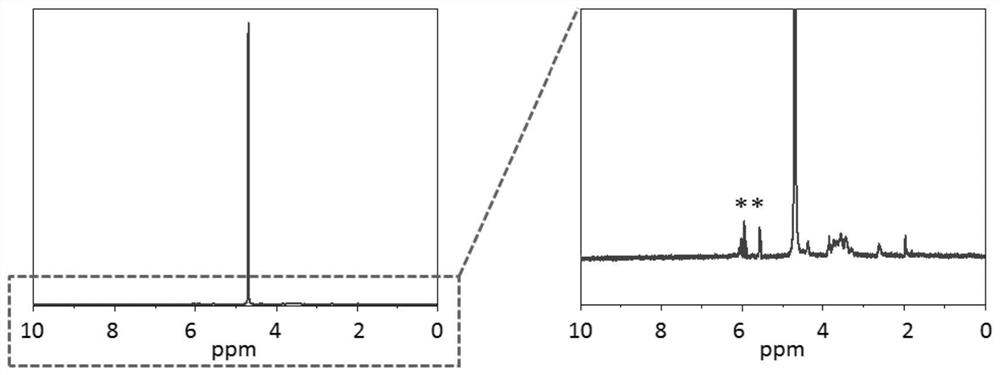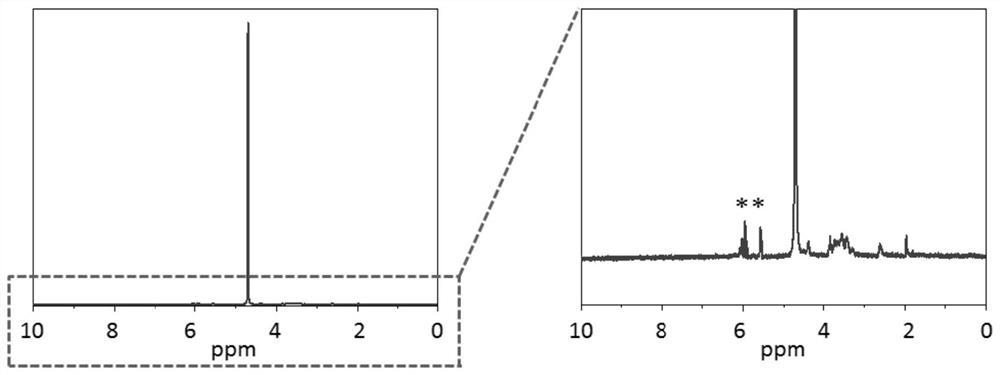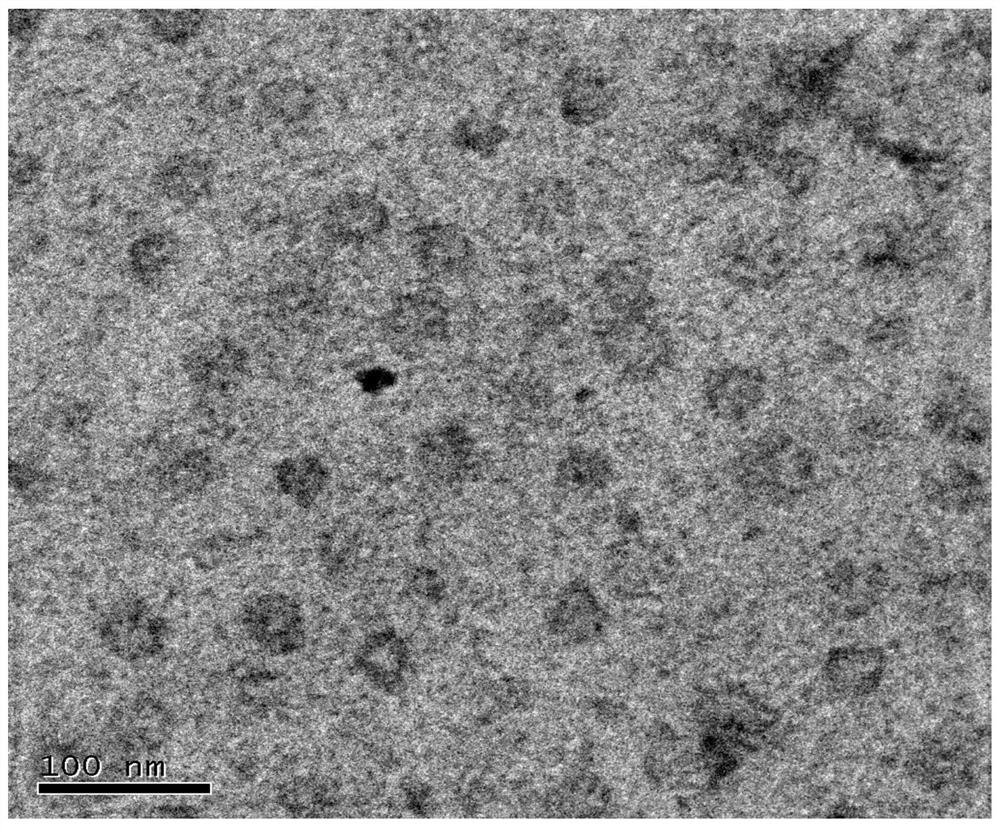A kind of nano material and its preparation method and application
A nanomaterial, peptide polymer technology, applied in biochemical equipment and methods, microbial determination/inspection, etc., can solve the problems of inefficient storage of DNA storage time, inefficient storage time, complex DNA, etc., and achieve good biological phase. Capacitance and stability, high anti-counterfeiting ability, huge amount of information
- Summary
- Abstract
- Description
- Claims
- Application Information
AI Technical Summary
Problems solved by technology
Method used
Image
Examples
Embodiment 1
[0064] A polypeptide polymer nanomaterial, the preparation method comprising the following steps: dissolving 1mmol of chitosan in 2mL of deionized water and heating to 50°C, keeping it under stirring for 50min, then cooling to room temperature, adding 6mmol of triethylamine, and slowly Add 4mmol acryloyl chloride, react for 18 hours, dialyze, freeze-dry to obtain the chitosan of acryloyl; finally the chitosan of 0.1mmol acryloyl and molar ratio are 1:1 R1 and R2 (the amount summation of its substance Satisfy 0.3mmol) through the Michael addition method to prepare multifunctional polypeptide polymer nanomaterials. Wherein, R1 is lysine, and R2 is phenylalanine-glycine.
[0065] Wherein, the chitosan structure of acrylylation is shown in the following formula:
[0066]
[0067] NMR image of propionylated chitosan figure 1 shown in figure 1 Among them, the double bond characteristic peak of the NMR peak at ppm=5.8-6.3.
[0068] The structure of the polypeptide polymer nano...
Embodiment 2
[0077] A polypeptide polymer nanomaterial, the preparation method comprising the following steps: dissolving 1mmol chitosan in 2mL deionized water and heating to 50°C, keeping stirring for 30min, then cooling to room temperature, adding 5mmol triethylamine, and slowly Add 3mmol acryloyl chloride, react for 12 hours, dialyze and lyophilize to obtain acryloyl chitosan; finally the 0.1mmol acryloyl chitosan and mol ratio are 10:1 R1 and R2 (the total amount of its substance Satisfy 0.2mmol) through the Michael addition method to prepare multifunctional polypeptide polymer nanomaterials. Wherein R1 is K12, that is, 12 lysines, and R2 is G10, that is, 10 glycines.
[0078] The above-mentioned polypeptide polymer nanomaterial is applied to the step of obtaining nanoparticles in the storage and recognition of DNA, which is the same as that in Example 1.
[0079] The structure of the resulting polypeptide polymer nanomaterial is shown in the following formula:
[0080]
Embodiment 3
[0082] A polypeptide polymer nanomaterial, the preparation method comprising the following steps: dissolving 1mmol of chitosan in 2mL of deionized water and heating to 50°C, keeping it under stirring for 30min, then cooling to room temperature, adding 10mmol of triethylamine, and slowly Add 5mmol acryloyl chloride, react for 24 hours, dialyze, freeze-dry to obtain the chitosan of acryloyl; Finally, the chitosan of 0.1mmol acryloyl and molar ratio are 1:10 R1 and R2 (the amount summation of its substance Satisfy 0.5mmol) through the Michael addition method to prepare multifunctional polypeptide polymer nanomaterials. Wherein R1 is H12, that is, 12 histidines, and R2 is F2G8, that is, 2 phenylalanines and 8 glycines.
[0083] The above-mentioned polypeptide polymer nanomaterials can be applied to the step of obtaining nanoparticles in the storage and recognition of DNA, which is the same as in Example 1.
[0084] The structure of the resulting polypeptide polymer nanomaterial i...
PUM
| Property | Measurement | Unit |
|---|---|---|
| concentration | aaaaa | aaaaa |
Abstract
Description
Claims
Application Information
 Login to View More
Login to View More - R&D
- Intellectual Property
- Life Sciences
- Materials
- Tech Scout
- Unparalleled Data Quality
- Higher Quality Content
- 60% Fewer Hallucinations
Browse by: Latest US Patents, China's latest patents, Technical Efficacy Thesaurus, Application Domain, Technology Topic, Popular Technical Reports.
© 2025 PatSnap. All rights reserved.Legal|Privacy policy|Modern Slavery Act Transparency Statement|Sitemap|About US| Contact US: help@patsnap.com



